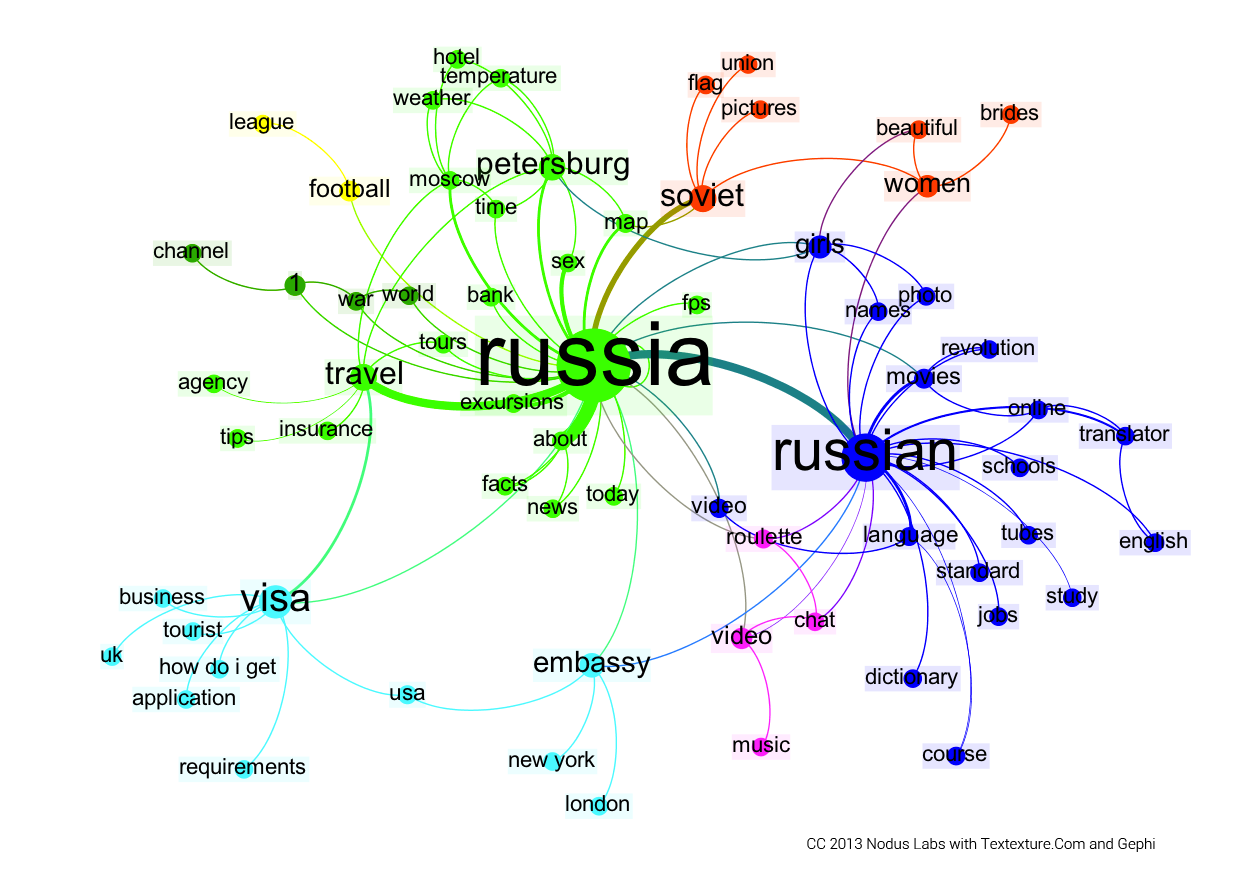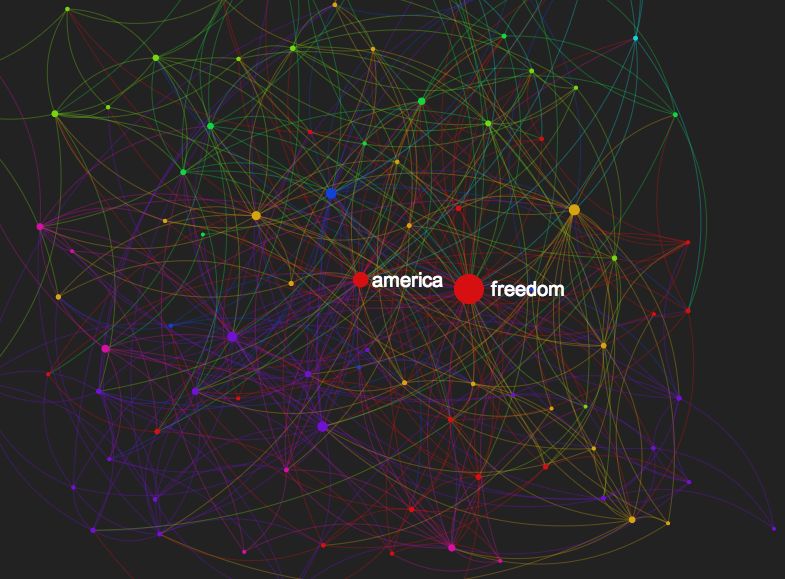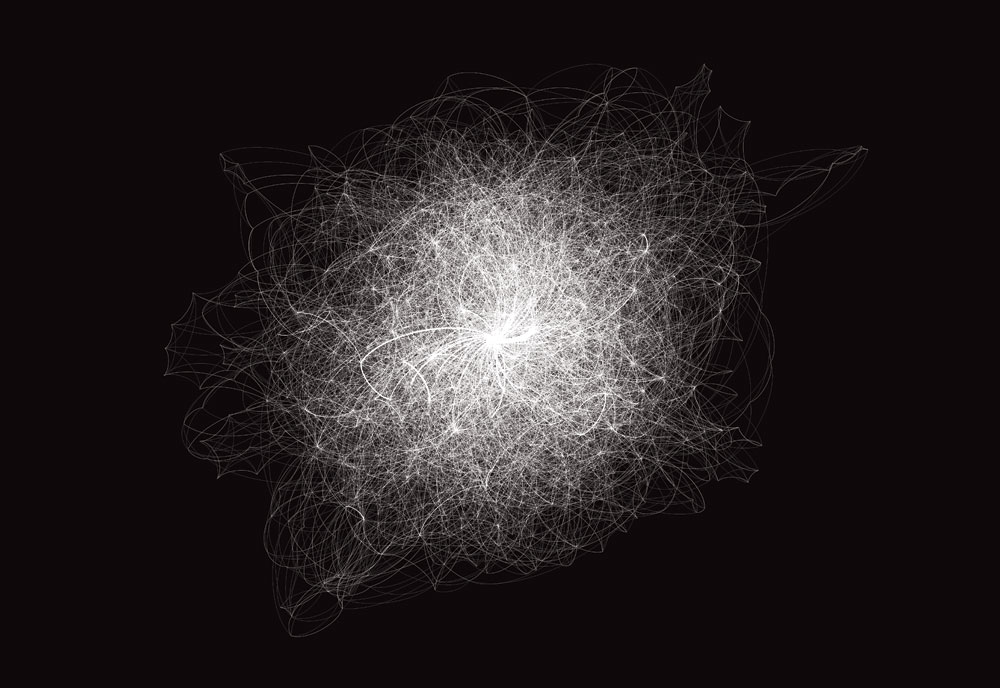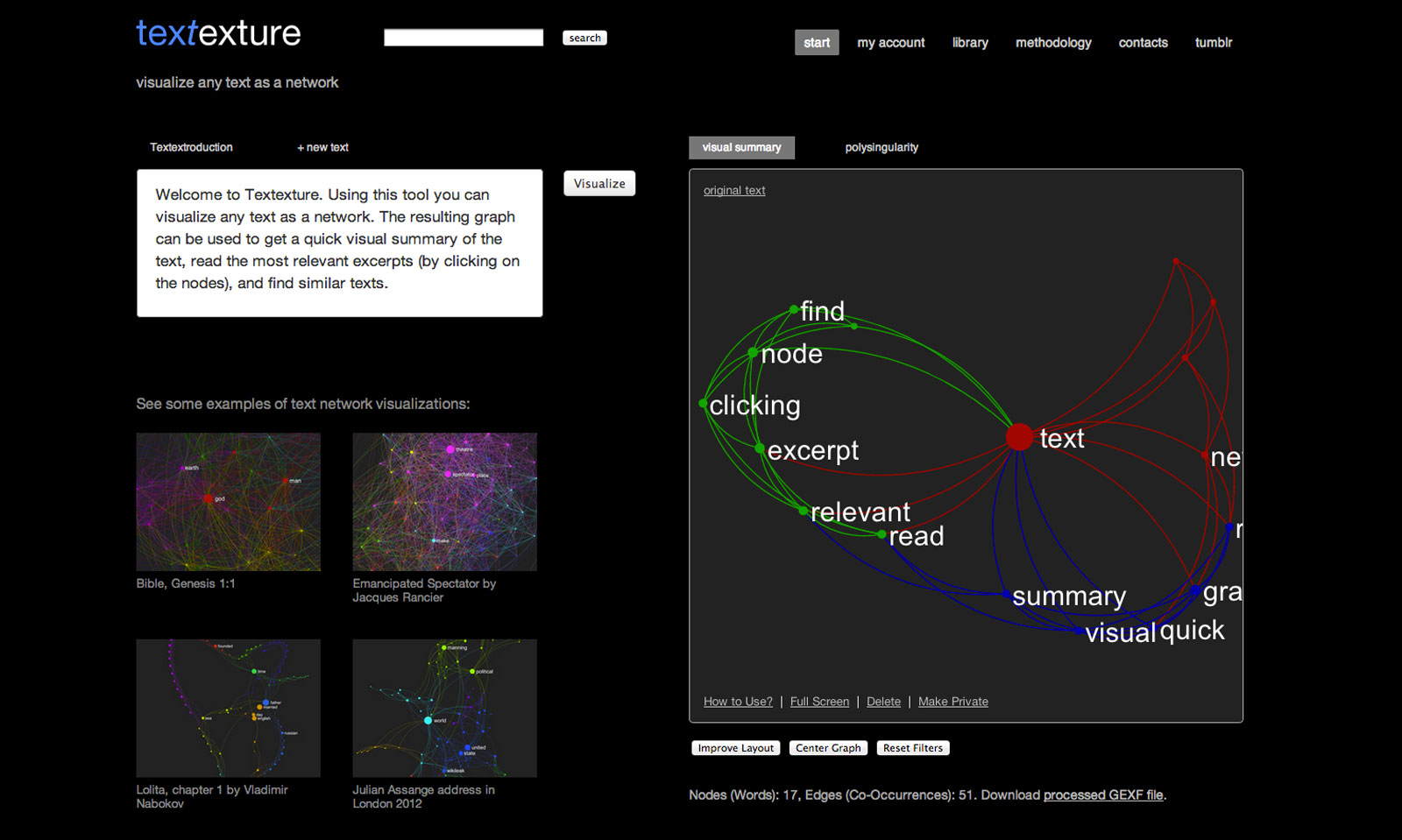Posted by Nodus Labs | August 3, 2013
Text Network Analysis for SEO
How text network analysis can be used for website SEO. We use an example of a travel guide website to find out what people are searching for in relation to travel, what they actually find, and how well the travel guide website studied responds to the needs of the users. We also explore the idea of content polysingularity ensuring that information offered within the website does not only fulfil the readers’ needs, but also helps them learn more and discover new perspectives about the topics they’re interested in.





